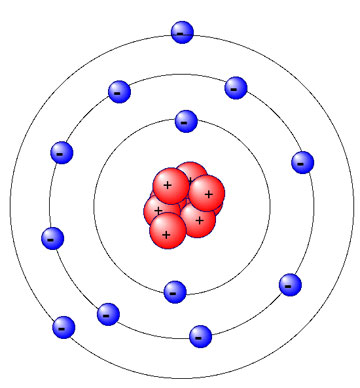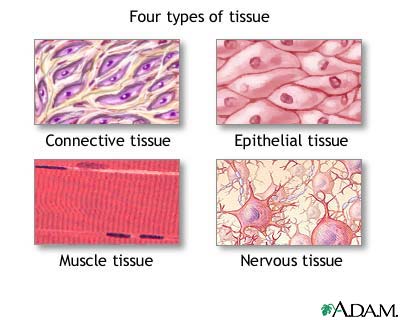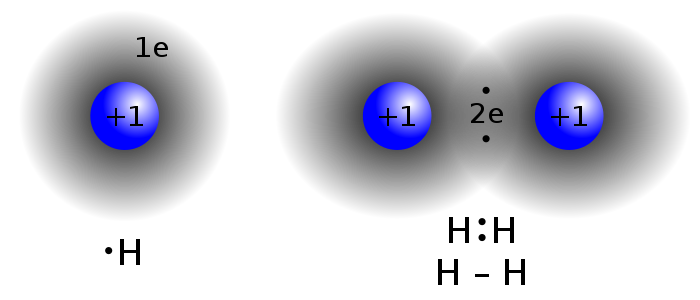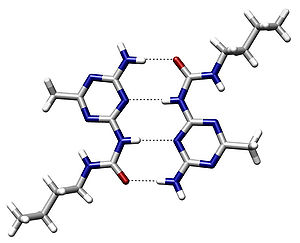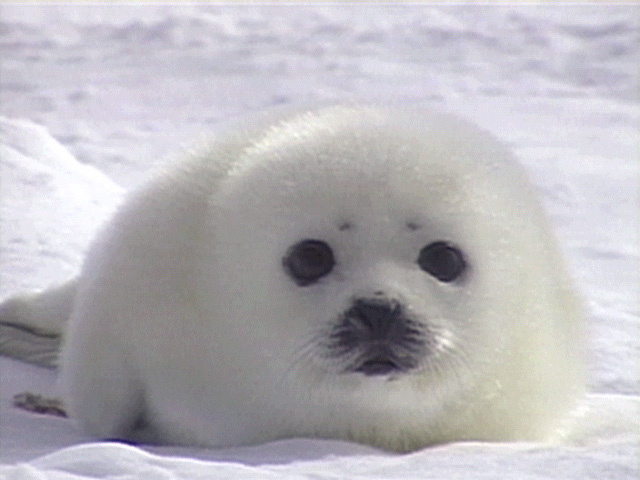"Okay, class." Once again, Mrs. Villanueva, our awesome Biology teacher, wanted us to do something. Something that we had never done before, but we were used to it. Since at that time our lesson was about ways on how to conserve our wildlife, she told us to create a campaign for it. And how, you might ask.
"You're going to make your own video, then post it on Facebook, so everyone can see your work. After a week, we will count the number of likes and comments that I will be relying to your score," she said with a smile.
The night after, I was assigned to make our video. At first, I didn't know what to do. After an hour of planning, I'd finally decided to create it. I took pictures and infos from the net, added some background music, and did some "techie" stuffs. After two hours, I'd finished it.
It was a success! After a week, we got 264 likes and 45 comments (although some were just forced to comment, but the rest really did like the vid.) We received tons of praises from, of course, our friends, parents, relatives. And that was our first Bio Activity :D
You see, we can use our technology in promoting environment awareness. Not only in Facebook, but also in other social-networking sites, blogs, or even through texts for as long as you do this to save our Mommy Nature.
Here is our video. Hope you'll like it! -Christlyn Faith H. Arias, II-Edison
Discover the science of life
Thursday, August 4, 2011
The Characteristics of Living Organisms
Had there a time when you asked yourself what made you different from other creatures of God? Had there a time when you thought how people, particularly, scientists how they were able to classify millions of things as living or non-living?
What makes living things differ from non-living things?
For an object to be considered a living thing, it should exhibit the following characteristics- reproduction, growth and development, evolution, adaptation, homeostasis, metabolism, and irritability. Take for example, these two pictures below:
Which of them is a living thing? Why?
Characteristics:
Reproduction
Reproduction is the ability to produce its own kind, whether sexually or asexually. Some plants can reproduce on their own while others need the help of other so fertilization will take place. Although they have the same body parts, only the first one can reproduce its own kind sexually. Even though the second one, the doll, can be reproduced. It can only be reproduced with the aid of a factory worker.
Growth and Development
There should be changes or increase in height, weight, shape, body, and response to the environment. On the two pictures, only the girl can develop, but the doll cannot.
Adaptation
It can adapt to its surroundings for survival.
Irritability
Irritability is the response of an organism to stimuli. If you place these two examples in a very hot environment, which of them would react to the environment? Which of them will sweat? Right, only the girl can sweat because she responds to the environment's condition.
Homeostasis
Homeostasis is the ability to maintain the internal environment of an organism. The normal body temperature for humans is 37 degrees Celsius.
Evolution
Evolution comes from the root word, evolve, is the change in traits or characteristics over a period of time.
You might have asked, "What is the significance of the characteristics of living things to us?" We need to know its different characteristics to be able to differentiate it to a non-living. Scientist should have this knowledge to have a deeper study in microscopic organisms, their anatomy and how they live.
Christlyn Faith H. Arias
II-Edison
What makes living things differ from non-living things?
For an object to be considered a living thing, it should exhibit the following characteristics- reproduction, growth and development, evolution, adaptation, homeostasis, metabolism, and irritability. Take for example, these two pictures below:
Which of them is a living thing? Why?
Characteristics:
Reproduction
Reproduction is the ability to produce its own kind, whether sexually or asexually. Some plants can reproduce on their own while others need the help of other so fertilization will take place. Although they have the same body parts, only the first one can reproduce its own kind sexually. Even though the second one, the doll, can be reproduced. It can only be reproduced with the aid of a factory worker.
Growth and Development
There should be changes or increase in height, weight, shape, body, and response to the environment. On the two pictures, only the girl can develop, but the doll cannot.
Adaptation
It can adapt to its surroundings for survival.
Irritability
Irritability is the response of an organism to stimuli. If you place these two examples in a very hot environment, which of them would react to the environment? Which of them will sweat? Right, only the girl can sweat because she responds to the environment's condition.
Homeostasis
Homeostasis is the ability to maintain the internal environment of an organism. The normal body temperature for humans is 37 degrees Celsius.
Evolution
Evolution comes from the root word, evolve, is the change in traits or characteristics over a period of time.
You might have asked, "What is the significance of the characteristics of living things to us?" We need to know its different characteristics to be able to differentiate it to a non-living. Scientist should have this knowledge to have a deeper study in microscopic organisms, their anatomy and how they live.
Christlyn Faith H. Arias
II-Edison
Hierarchy of Living Things
Biological organization, or the hierarchy of life, is the hierarchy of complex biological structures and system that define life using a reductionistic approach. The traditional hierarchy, as detailed below, extends from atoms (or lower) to biospheres. The higher levels of this scheme are often referred to as ecological organisation.
Each level in the hierarchy represents an increase in organizational complexity with each "object" being primarily composed of the previous level's basic unit. The basic principle behind the organisation is the concept of emergence—the properties and functions found at a hierarchical level are not present and irrelevant at the lower levels.
Organisation furthermore refers to the high degree of order of an organism (in comparison to general objects). Ideally, individual organisms of the same species have the same arrangement of the same structures. For example, the typical human has a torso with two legs at the bottom and two arms on the sides and a head on top. It is extremely rare (and usually impossible, due to physiological and biomechanical factors) to find a human that has all of these structures but in a different arrangement.
1. Atom- the basic unit of matter
2. Molecule- a grouping of atoms
3.Organelle-a functional grouping of biomolecules; biochemical reactions and interactions.
4. Cell- the basic unit of all living things and the grouping of organelles.
5. Tissue- grouping of cells
6. Organ- a group of tissues
7. Organ System- a group of organs which functions together.
8. Organism- the basic living system, a functional grouping of the lower-level components, including at least one cell.
9. Population- a grouping of organisms of the same species.
10. Biocoenosis/Community- an interspecific grouping of populations.
11. Ecosystem- a grouping of organisms from all biological domains in conjunction with the physical environment.
12. Biosphere- the complete set of ecosystems.
-Angelo Ramos, II-Edison
Each level in the hierarchy represents an increase in organizational complexity with each "object" being primarily composed of the previous level's basic unit. The basic principle behind the organisation is the concept of emergence—the properties and functions found at a hierarchical level are not present and irrelevant at the lower levels.
Organisation furthermore refers to the high degree of order of an organism (in comparison to general objects). Ideally, individual organisms of the same species have the same arrangement of the same structures. For example, the typical human has a torso with two legs at the bottom and two arms on the sides and a head on top. It is extremely rare (and usually impossible, due to physiological and biomechanical factors) to find a human that has all of these structures but in a different arrangement.
1. Atom- the basic unit of matter
2. Molecule- a grouping of atoms
3.Organelle-a functional grouping of biomolecules; biochemical reactions and interactions.
4. Cell- the basic unit of all living things and the grouping of organelles.
5. Tissue- grouping of cells
6. Organ- a group of tissues
7. Organ System- a group of organs which functions together.
8. Organism- the basic living system, a functional grouping of the lower-level components, including at least one cell.
9. Population- a grouping of organisms of the same species.
10. Biocoenosis/Community- an interspecific grouping of populations.
11. Ecosystem- a grouping of organisms from all biological domains in conjunction with the physical environment.
12. Biosphere- the complete set of ecosystems.
-Angelo Ramos, II-Edison
Atoms, Molecules, and Bonds
Atom
The atom is the basic, smallest unit of matter. Therefore it is indivisible, uncuttable, or cannot be divided any further, as the definition of the Greek word "atomos." As shown in the picture above, the atom is composed of electrons, protons, and neutrons. The atomic nucleus consists of protons and neutrons, and it is surrounded by negatively charged ions, called electrons. The electrons of an atom are bound to the nucleus by the electromagnetic force.
An atom is classified according to the number of protons and neutrons in its nucleus: the number of protons determines the chemical element, and the number of neutrons determines the isotope of the element.
A group of atoms can be bound to each other, forming a molecule.
Molecule
A molecule is an electrically neutral group of at least two atoms held together by covalent chemical bonds. Molecules are distinguished from ions by their electrical charge.
A molecule may consist of atoms of a single chemical element, as with oxygen (O2), or of different elements, as with water (H2O). Atoms and complexes connected by non-covalent bonds such as hydrogen bonds or ionic bonds are generally not considered single molecules.
Chemical Bond
A chemical bond is an attraction between atoms that allows the formation of chemical substances that contain two or more atoms. The bond is caused by the electromagnetic force attraction between opposite charges, either between electrons and nuclei, or as the result of a dipole attraction. The strength of chemical bonds varies considerably; there are "strong bonds" such as covalent or ionic bonds and "weak bonds" such as hydrogen bonding.
Since opposite charges attract via a simple electromagnetic force, the negatively charged electrons orbiting the nucleus and the positively charged protons in the nucleus attract each other. Also, an electron positioned between two nuclei will be attracted to both of them. Thus, the most stable configuration of nuclei and electrons is one in which the electrons spend more time between nuclei, than anywhere else in space. These electrons cause the nuclei to be attracted to each other, and this attraction results in the bond. However, this assembly cannot collapse to a size dictated by the volumes of these individual particles. Due to the matter wave nature of electrons and their smaller mass, they occupy a much larger amount of volume compared with the nuclei, and this volume occupied by the electrons keeps the atomic nuclei relatively far apart, as compared with the size of the nuclei themselves.
Types of Chemical Bonds
Covalent Bond
a form of chemical bonding that is characterized by the sharing of pairs of electrons between atoms, and other covalent bonds. The stable balance of attractive and repulsive forces between atoms when they share electrons is known as covalent bonding.
Two hydrogen atoms sharing the same electrons.
Ionic Bond
In ionic bonding, electrons are completely transferred from one atom to another. In the process of either losing or gaining negatively charged electrons, the reacting atoms form ions. The oppositely charged ions are attracted to each other by electrostatic forces, which are the basis of the ionic bond.
During the reaction of sodium with chlorine, sodium (left) loses its one valence electron to chlorine (right), resulting in:
a positively charged sodium ion (left) and a negatively charged chlorine ion (right).
Hydrogen Bond
A hydrogen bond is the attractive interaction of a hydrogen atom with an electronegative atom, such as nitrogen, oxygen, our fluorine, that comes from another molecule or chemical group. The hydrogen must be covalently bonded to another electronegative atom to create the bond. These bonds can occur between molecules (intermolecularly), or within different parts of a single molecule (intramolecularly). The hydrogen bond (5 to 30 kJ/mole) is stronger than a van der Waals relation, but weaker than covalent or ionic bonds. This type of bond occurs in both inorganic molecules such as water and organic molecules such as DNA.
An example of intermolecular hydrogen bonding.
Go! Go! Go! Bio!
Another day, and its 9:00 AM time for my favorite part of the day, my encounter with Mrs. Villanueva (of course my Biology-Teacher) and my favorite subject! Science.
Today, we had a wonderful group activity. We were given the choices of: performing a song or a dance, making a short skit, writing a poem or a debate.
My group chose to write a poem, so there it was. I was the one assigned. Here it is:
The law was passed by Congress in December 2000 and signed by the President of the Philippines on January 26, 2001 with the aim of adopting a systematic, comprehensive, and ecological solid waste management program.
DAO 2000- PESWMA Implementing Rules and Regulations
Today, we had a wonderful group activity. We were given the choices of: performing a song or a dance, making a short skit, writing a poem or a debate.
My group chose to write a poem, so there it was. I was the one assigned. Here it is:
Our Barangay has a good infatuation
We must always practice waste segregation
Canal-cleaning and garbage-collection
Are some of our captain's helpful infatuation
Another project is Clean and Green
This was emphasized in Tree Planting
Now we plant the seed of our life
So tomorrow's children will never strife
"Tapat Ko, Linis Ko" was another policy
Cleaning litters will benefit you and me
Just imagine if our place is garbage-free
People will leave happy and healthy
Now in the end there is a question
Will you obey it and continue to live on?
It's our choice and we must decide
If we will lean on Mother Nature's side.
This presentation was actually fun, we recited the poem well but in some lines our voice went absurd and our teacher commented us on that. But more or less I knew she was happy.
Some other groups performed their choices. Some performed a skit and others a dialogue. And a group performed a somewhat like 'Senate Hearing', and they acted like senators and congressmen implementing laws these are some of them:
Solid Waste Management
RA 9003: Philippine Ecological Solid Waste Management Act (PESWMA) of 2000The law was passed by Congress in December 2000 and signed by the President of the Philippines on January 26, 2001 with the aim of adopting a systematic, comprehensive, and ecological solid waste management program.
DAO 2000- PESWMA Implementing Rules and Regulations
- Environmental Impact AssessmentPresidential Decree (PD) 1586: Philippine Environmental Impact Statement System (PEIS)
The law that requires that all agencies and instrumentalities of the national government including government owned and controlled corporations as well as private corporations, firms and entities must prepare an environmental impact statement for every proposed project and undertaking which significantly affect the quality of the environment.
DENR Administrative Order (DAO) 03-30: PEIS Implementation Guidelines and Procedures - Air Quality ManagementRepublic Act (RA) 8749: Philippine Clean Air Act (PCAA) of 1999
The law that provides a comprehensive air pollution control policy. Specifically, this legislative intends to apply air quality management in all sources in order to implement abatement and control of air pollution.
DAO 2000-81: PCAA Implementing Rules and Regulations - Protected Areas ManagementRA 7586: National Integrated Protected Areas System (NIPAS) Act of 1992
The law that provides a paradigm shift in PA management from the national government agency through the DENR to the local body known as the Protected Area Management Board (PAMB).The PAMB is a multisectoral body chaired by the DENR with representation from the local government units (LGUs), non-governmental organizations (NGOs), people's organizations (POs), indigenous peoples (IPs) through their Council of Elders and national government agencies (NGAs).
DAO 1992-25 NIPAS Implementing Rules and Regulations
PD 705: Philippine Forestry Reform Code
The law that defines the classification, management and utilization of forest lands and resources. - Water Quality ManagementRA 9275: Philippine Clean Water Act of 2004
The law that provides a comprehensive water pollution control policy. Specifically, this legislative intends to apply water quality management in all water bodies in order to implement abatement and control of pollution from land based sources.
DAO 2005-10 PCWA Implementing Rules and Regulations
PD 1067: Water Code of the Philippines - Hazardous Substances and Wastes ManagementRA 6969: Philippine Toxic Substances and Hazardous and Nuclear Waste Act (PTCHNWA)
This Act mandates the regulation, restriction, or prohibition of the importation, manufacture, processing, sale, distribution, use, and disposal of chemical substances and mixtures that present unreasonable risk and/or injury to health and the environment.
DAO 92-29: PTCHNWA Implementing Rules and Regulations
Leonides C. Frago Jr.
II-Edison
Manila Science High School
Credits:
Wednesday, August 3, 2011
Origins
We all know that the word "origin" means:
- the beginning
- starting point
- cause
from which a thing is derived or generated.
Just like in biology, the origin of some certain species are the places where they came from. here are some examples of plants and animals, and where they originated.
Koala
-is an arboreal herbivorous marsupial native to Australia, and the only extant representative of the family Phascolarctidae.
-found in coastal regions of eastern and southern Australia, from Adelaide to the southern part of Cape York Peninsula.
-broadly similar to a wombat, but has a thicker coat, larger ears, and longer limbs. They also have large and sharp claws.
Cactus
-is a member of the plant family Cactaceae. Their distinctive appearance is a result of adaptations to conserve water in dry and hot environment. In most species, the stem has evolved to become photosynthetic and succulent.
-originated from deserts in Mexico.
Maple
-approximately 129 species, most of which are native to Asia, with also a number appearing in Europe, Northern Africa, and America.
-most maple trees are growing to 10.45 meters (30-145ft.) in height. others are shrubs less than 10 meters tall with a number of small trunks originating at ground level.
-distinguished by opposite leaf arrangement.
Pine Trees
-pines are native to most of the Northern Hemisphere. In Eurasia, they range from the Canary Islands, Ibarin Peninsula, and Scotland east to the Russian Far East, and in the Philippines.
-evergreen, resinous trees growing 3.80m tall. The barks are thick and scaly, but some have thin, flaking bark. Pines can live up to 100-1000 years old.
Tasmanian Devil
-a carnivorous marsupial now found in the wild only in Australia.
-size of a small dog, with stocky and muscular build, black fur, pungent odor, loud and disturbing screech, keen sense of smell, and ferocity when feeding.
Kangaroo
-kangaroos are the only animals to use hopping as their locomotion. The average lifespan of kangaroos averages at 6 years in the wild to in excess of 20 years in captivity, varying by species.
-a marsupial from the family Macropodidae. Kangaroos are endemic to the country of Australia. The smaller macropods are found in Australia and New Guinea.
Seal
-seals are well-designed to swim in water. Their bodies are very streamlined and their flippers propel them quickly to the water.
- a seal's respiratory system is adapted for water. A seal can go for 40 minutes without breathing.
Walrus
-is a large-flippered mammal with a discontinuous circumpolar distribution in the Arctic Ocean and Sub-Arctic seas of the Northern Hemisphere.
-can be easily recognized by its prominent tusks, whiskers, and great bulk. It is a relatively long-lived, social animal and is considered a keystone species in Arctic marine ecosystems.
Rafflesia
-a genus of parasitic flowering plants, which contains 28 species, all found in Southeastern Asia, on the Malay Peninsula, Bornero, Sumatra, and Philippines.
-the plant has no stems, leaves, or roots. The five-petaled flower may be over 100 centimeters in diameter, and weighs up to 10 kilograms. The flower looks and smells like rotten flesh.
Zebra
-are African equids best known for their black and white stripes. Their stripes come in different patterns unique to each individuals.
-they occur in a variety of habitats, such as grasslands, savannahs, woodlands, mountains, and coastal hills.
It is really important to learn about animals' origins because if an animal is near to extinction (endangered), it might affect the food chain. For example, when a zebra would become extinct, those carnivorous or omnivorous animals who feed on zebras will have their population reduced, until the time will come when those carnivores/omnivores will be extinct too. This shows that the transfer of energy will be affected if an animal becomes extinct.
-Angelo Ramos, II-Edison
Friday, July 29, 2011
Life's more complicated than what you think.
(c) Youtube, "Wildlife" by Windows
Our world has a vast biodiversity- from the smallest prokaryotes to the biggest living creatures. We may not see it, but each organism is very important to our lives. Some are harmless; others can be deadly; some are small and thin; some are huge. But, they made up our biodiversity and every single organism is very important to one another.
Biodiversity is a part of a broad science of life known as Biology. Biology does not only talk about the scientific names of some animal and plant species, or the parts of a eukaryotic and prokayotic cells and their functions. It is a broad field of science. We should discover and explore the huge world of this subject. Throughout the school year, we will be posting our thoughts and ideas about the science of life. Everything that we can relate it is posted every Wednesday, Friday, and Sunday.
-Christlyn Faith H. Arias
II-Edison
-Christlyn Faith H. Arias
II-Edison
Subscribe to:
Posts (Atom)


